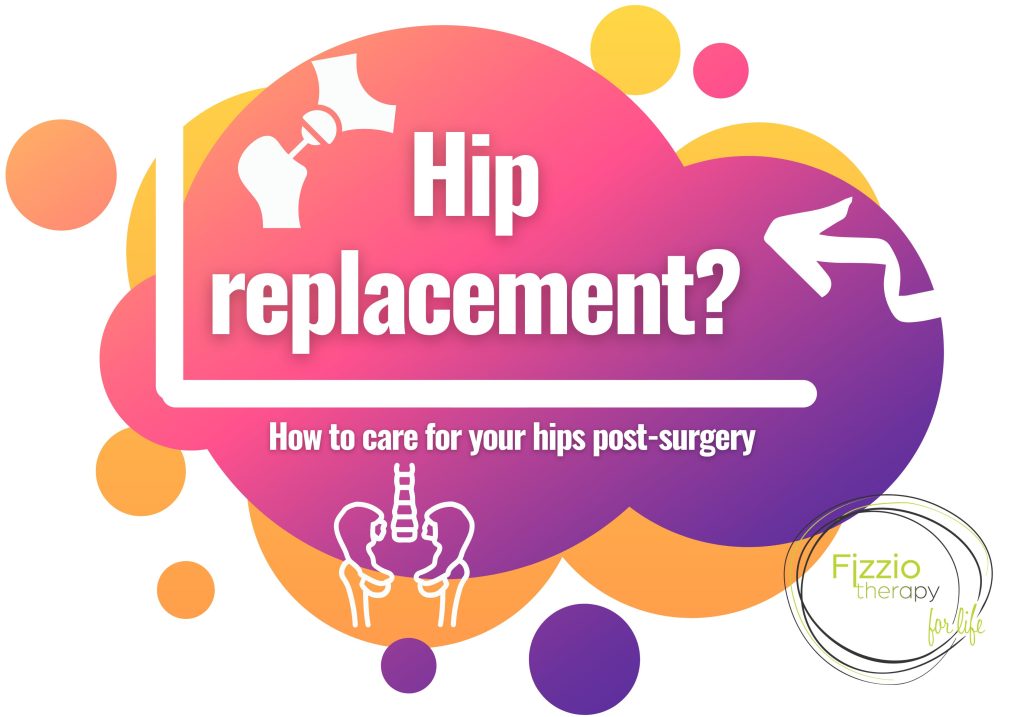
Whether you are just exploring treatment options, have decided to go ahead with the surgery, or have already had a hip replacement, the following information will help you through your recovery journey.
Although there are average guidelines regarding recovery time, recovery will look different for every hip replacement. Factors such as age, pre-habilitation/strength, general health and well-being can impact the recovery journey—there’s no point in comparing how others are going; it’s your hip, and your goals are most important to you.
It is vital that you take an active role in your recovery journey, working together with your doctors and allied health practitioners to plan and prepare for successful recovery.
Average recovery time
First week – post operative
Don’t be surprised if a physiotherapist comes in to help you get out of bed as early as the day of the operation. Physiotherapists will show you ways to get in and out of bed safely and mobilise when safe – usually with a gait aid.
Exercises in the hospital—Depending on your progress, the physiotherapist will prescribe a couple of exercises, ensuring you do them safely and according to the prescription. Having pain relief/medication before Physiotherapy sessions will help you participate better.
When it is safe to go home, you will likely be discharged within a few days, i.e., when you can get around confidently and safely with a walking aid, are mostly independent (not everyone has to be independent to be discharged from the hospital), have organised relevant equipment at home, and have no other complications.
Exercises after the hospital: Your physiotherapist will continue to work with you and progress your exercise program to improve your strength and balance. Ensure swelling and pain are well controlled. It is harder to see swelling in the hip than in the knee, however, swelling can last up to 3-6 months.
Can I move normally after hip surgery?
When getting your hip done, you may have heard from your surgeon and the physiotherapist what movements to avoid with your hips. It’s called a hip precaution, a well-known post-operative protocol designed to mitigate hip dislocations that can occur at an estimated incidence of 1-3%.
There are a few different surgical approaches to hip replacement, i.e., going through the muscles of the buttock (Posterolateral), going from the front (Direct anterior), or going slightly off to the side a bit from the front (Anterolateral). Hip precautions depend on the surgeon and what approach they have used. Depending on the hospital, your doctor, nurse, or physiotherapist will go through this with you before and after the surgery unless you are in for an emergency hip replacement.
The most common approach for hip replacement is the posterior approach – provocative positions for this approach include bending the hips, bringing legs across the body’s midline or twisting the leg inwards. Precautions include:
– Do not bend the hip more than 90 degrees (you may need pieces of equipment at home)
– Do not cross your legs or feet
– Do not roll or lie on your unoperated side for the first six weeks ( this will make the operated leg cross the midline)
– Do not twist the upper body when standing
– Sleep on the back for the first six weeks
– Avoid bathing (you can still shower) and bending down to the tub for 8-12 weeks
(More information available from National Library of Medicine ‘Hip Precautions’)
Ultimately, the surgeon who performed your hip surgery will decide the hip precautions and what you can or are limited to. The nurses and physiotherapists will check the post-operation orders to ensure you comply with the protocol and minimise the risk of dislocation.
Reaching 6-week mark
You might have gotten rid of the gait aid by six weeks as it feels less painful. However, if you are limping without the aid, you need to practice walking correctly with it. Once you can walk normally with an aid, then you can move on to practice without it. By six weeks, your hip movements would have improved, and you would have started to perform light activities such as preparing meals and other daily tasks. It will have become easier to take care of the hip and able to go up and down stairs. If you have taken a leave from work for the surgery, please seek advice from your treating doctor before returning to work.
Congratulations, you made it to the 3rd month!
You should be able to feel that swelling has gone down significantly by now. If you have access to a gym, you might have started using stationary bikes or light weights. If you need help determining which exercises to do and when, please consult the physiotherapist treating you. You will need clearance to drive from your treating doctorIf you have a sport to return to or want to start a new sport, please consult the treating doctor and your physiotherapist.
Remember that you have a brand new hip in there, and it can take up to 12 months for a full recovery. If you have any questions, or would like to know any further information please reach out to us below, or on 38053223.
Like to know more information?
Reference List
https://www.svph.org.au/services/orthopaedics/knowledge-hub/hip-replacement-surgery-your-recovery
https://orthoinfo.aaos.org/en/treatment/total-hip-replacement/
https://www.healthdirect.gov.au/hip-replacement#:~:text=During%20hip%20replacement%20surgery%2C%20damaged,takes%201%20to%202%20hours.
https://www.ncbi.nlm.nih.gov/books/NBK537031/

